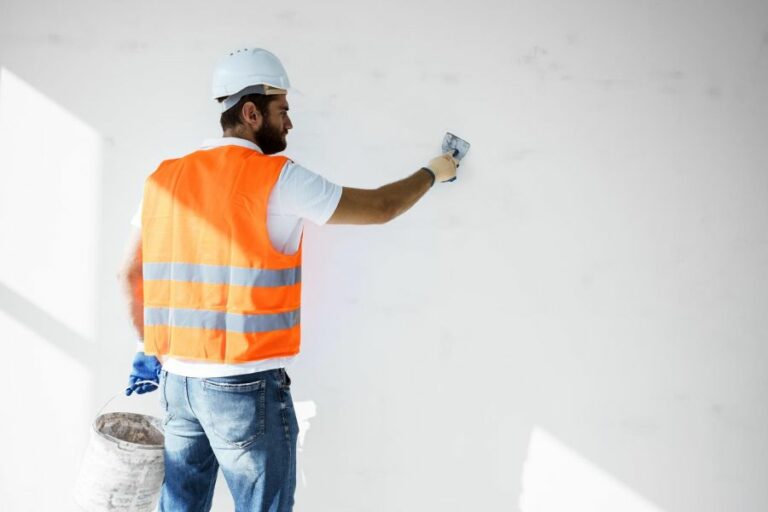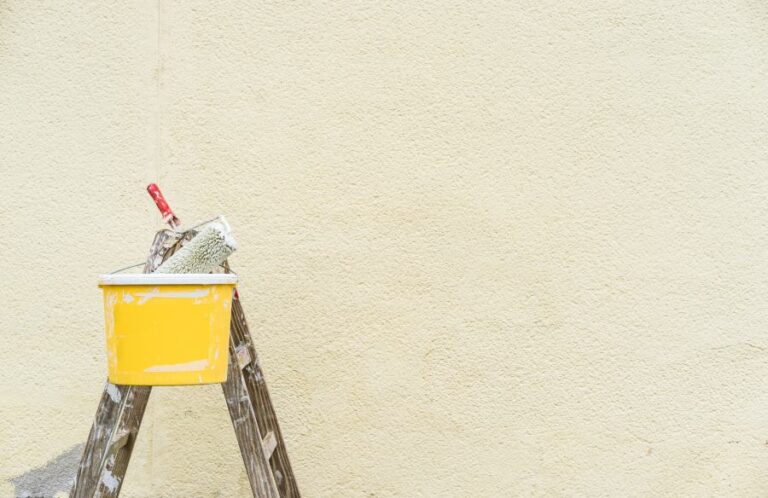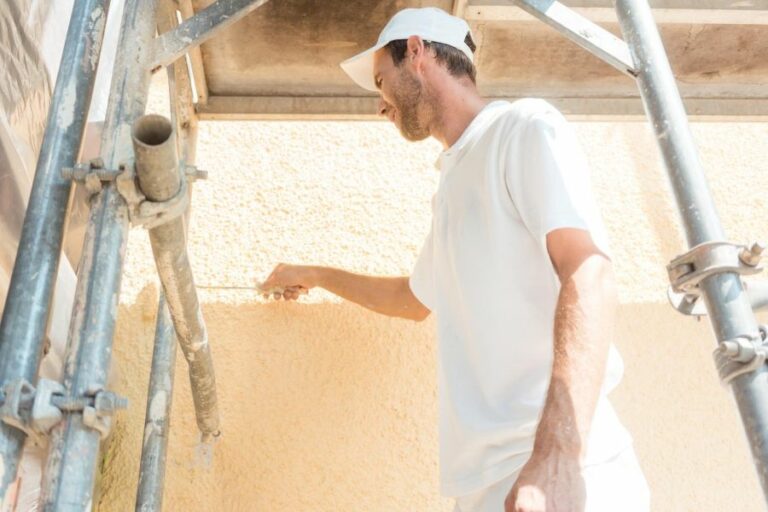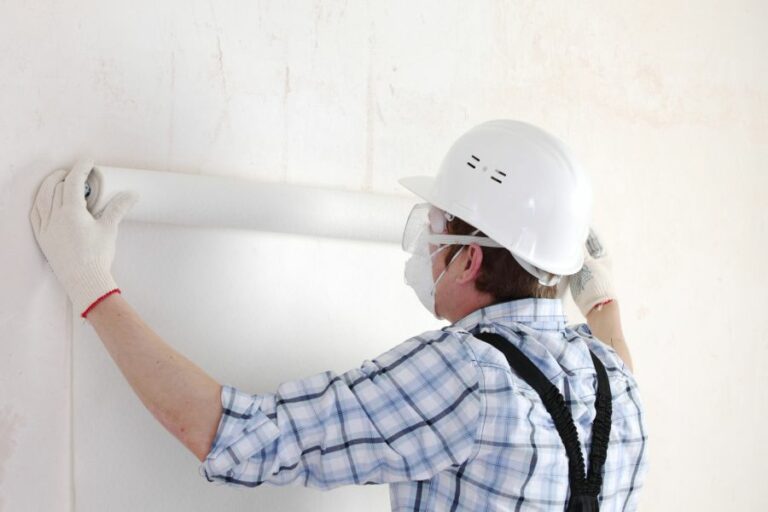Avoid Moisture Damage In Surface Preparation. What Pros Say
Moisture damage can be a major concern during surface preparation, but we’ve got you covered! This discussion will explore tips and techniques to avoid moisture-related issues and prevent costly repairs. Together, we’ll explore foolproof strategies that will keep your surfaces pristine and help you achieve that perfect finish you’ve been aiming for.
Avoid moisture damage in surface preparation:
To avoid moisture damage during surface preparation, accurately identify moisture content using tools like moisture meters, choose the right surface preparation technique, select an appropriate primer, properly seal and dry the surface, schedule work during dry periods, and perform regular inspections for early detection of moisture issues.

Have you ever faced moisture-related complications in surface preparation? You’re not alone. Excess moisture can lead to a wide range of issues. Stick around to learn valuable tips on avoiding moisture damage and ensuring a smooth, effective surface preparation process.
Contents
- 1 Preventing Moisture Damage during Surface Preparation
- 2 Key Considerations for Effective Surface Preparation
- 3 Importance of Surface Preparation Before Waterproof Coating Application
- 4 Consequences of Excess Moisture in Coating Applications
- 5 Understanding SA 2.0 Level of Surface Preparation
Preventing Moisture Damage during Surface Preparation
Surface preparation is a crucial step in any construction or renovation project. It ensures the durability and longevity of the final product. Moisture damage can significantly hinder the materials’ performance on surfaces, leading to costly repairs and poor results.
• Effects of Moisture Damage on Surface Preparation
Moisture damage can adversely impact the overall quality of your construction or renovation work. Here are some potential effects:
– Loss of Adhesion
Excess moisture on a surface can lead to peeling or flaking of the applied material, causing poor adhesion. This can weaken the bond between the surface and the final layer, eventually leading to failure.
– Mold and Mildew Growth
Moisture provides an ideal environment for mold and mildew growth, which can pose health risks and compromise the integrity of the building. Mold spores could infiltrate the indoor air, leading to respiratory issues and allergic reactions.
– Warping and Staining
Water can cause wood surfaces to warp and swell, whereas, in concrete surfaces, it may lead to structural cracks and staining. These damages can result in costly repairs and a less appealing final result.
• Identify Moisture Content
Before starting surface preparation, it is essential to identify the moisture content in your building materials. Some common methods to measure moisture content include:
- Using a moisture meter: A moisture meter is an essential tool for professionals as it provides accurate readings quickly.
- Checking for visible signs: Pay close attention to irregularities, stains, or spots that may indicate moisture presence.
• Best Practices to Avoid Moisture Damage in Surface Preparation
Follow these expert recommendations to minimize moisture damage during surface preparation.
– Choose the Right Surface Preparation Technique
Several surface preparation techniques are available, such as sandblasting, chemical stripping, and power washing. However, not all methods are suitable for every application. For instance, power washing may not be ideal for wood surfaces as it could significantly increase moisture levels.
Ensure to choose the right technique based on your project’s requirements and the surface material.
– Select the Right Primer
Priming your surface can help seal porous materials and create a barrier against moisture. Make sure to use a primer that’s specifically designed for the type of surface you’re working on.
Furthermore, it’s essential to follow the manufacturer’s application guidelines, as an improper application may lead to moisture trapping underneath.
– Properly Seal and Dry the Surface
Before applying any product on the surface, ensure it is correctly sealed and dry. For surfaces exposed to high moisture levels, such as basements or bathrooms, consider using vapor barriers or other waterproofing methods.
Additionally, ensure the surface is adequately dried out before moving on to the next step.
– Schedule Your Work Wisely
Consider the weather conditions during your surface preparation process, particularly for outdoor projects. High humidity or rain can significantly impact the moisture content in your materials, leading to potential damage.
It is recommended to schedule the work during dry periods and ensure sufficient time for the surface to dry before applying any materials.
– Perform Regular Inspections
Regular inspection is essential to identify any potential moisture damage early. Keep an eye out for visible signs of excess moisture, such as discoloration, cracking, or mold growth, and address any issues as soon as they arise.
• Wrapping Up
Moisture damage is a significant concern during surface preparation, and addressing this issue adequately is vital to ensure the durability and beauty of your project.
By following these best practices, you can minimize the likelihood of moisture damage and enjoy a successful construction or renovation that will stand the test of time.
Key Considerations for Effective Surface Preparation
Surface preparation is crucial in achieving a long-lasting and high-quality finish for various applications, such as painting, coating, or bonding.
Despite its importance, surface preparation is often underemphasized or overlooked, which can lead to premature failures such as peeling or blistering of the finish.
• Nature and Composition of the Surface Material
First and foremost, it is vital to understand the composition and nature of the material you are working with. Different materials, such as wood, metal, plastic, or concrete, require distinct preparation techniques to ensure optimal adhesion and durability of the finish.
For instance, wood surfaces may need sanding, while metals may require chemical treatments like phosphate conversion coatings or abrasive blasting. When in doubt, consult the manufacturer’s recommendations or seek advice from professionals.
The American Institute of Steel Construction (AISC) provides valuable resources and guidelines for preparing steel structures.
• Surface Condition and Previous Finishes
The existing condition of the surface plays a critical role in determining the necessary preparation work. Any dirt, grease, oils, or other contaminants should be removed before applying a new finish.
Additionally, the presence of any previous finishes or coatings, such as paint or varnish, must be considered.
In some cases, removal or abrading of these previous finishes is necessary to ensure proper adhesion of the new finish. It is also essential to inspect the surface for any imperfections or damages that may need repairs, such as cracks, holes, or protrusions.
• Environmental Factors
The environment in which the surface is located, both during preparation and after finishing, will have a significant impact on your chosen preparation method and materials. Consider factors like temperature, humidity, and exposure to sunlight, as each can affect the adhesion and durability of the finish.
For instance, high humidity can cause condensation during surface preparation, leading to the formation of rust on metal surfaces, or inhibit the drying and curing process of certain coatings.
Therefore, it is essential to plan how to control or mitigate the effects of environmental factors on the surface preparation process.
• Selection of Appropriate Preparation Equipment and Techniques
Depending on the material and condition of the surface, various equipment and techniques can be employed for adequate preparation. Brushing, scraping, sanding, abrasive blasting, and chemical treatments are all common methods for preparing different surfaces.
Choosing the right equipment, paired with the appropriate abrasive materials, cleaning agents, and chemicals, is crucial for an effective surface preparation process. Consult manufacturers, product datasheets, and industry guidelines to choose the best approach for your specific application.
• Safety and Environmental Considerations
During the course of surface preparation, workers may be exposed to hazardous materials or conditions, such as dust, chemicals, noise, or even physical strain.
Proper personal protective equipment (PPE), like gloves, respirators, goggles, and earmuffs, should be used as necessary to protect workers from potential harm. Furthermore, adequate ventilation should be provided during indoor work or when using chemicals with high vapor pressure.
In terms of environmental impact, choose cleaning agents and chemicals with low environmental risk, and dispose of waste materials in accordance with local and federal regulations.
• Quality Control and Inspection
To ensure the success of your surface preparation efforts, it is important to employ quality control measures and routine inspections throughout the process. This will help identify any inadequately prepared areas and check for residual contaminants or defects.
Such inspections can be performed by visual observation, touch, or more advanced methods like surface profilometry or adhesion testing.
Finally, thorough documentation of surface preparation procedures, staff training, and environmental monitoring can contribute to a consistent, high-quality process outcome.
In conclusion, understanding the significance of each factor in surface preparation is vital to achieving a long-lasting, high-quality finish for your application.
By carefully considering the material composition, surface conditions, environmental factors, proper techniques and equipment, safety measures, and quality control procedures, you will be well-equipped to confidently and succeed any surface preparation task.
Importance of Surface Preparation Before Waterproof Coating Application
A successful waterproof coating application depends on multiple factors, but one of the most crucial aspects is the proper surface preparation. This process entails cleaning and treating a surface before applying the waterproof coating, ensuring a longer-lasting and more effective barrier.
• Adhesion and Performance of Waterproof Coatings
Waterproof coatings work by creating a barrier that prevents moisture from penetrating a surface. For the coating to be effective, it must achieve optimum adhesion to the substrate.
Surface preparation ensures that the surface is clean and free from contaminants, providing a suitable environment for the coating to bond with the underlying material.
When a surface is inadequately prepared, the waterproof coating may not adhere properly, leading to compromised performance and reduced lifespan of the coating.
According to the American Concrete Institute (ACI), the correct surface preparation is the key to achieving strong adhesion, which in turn increases the service life of waterproof coatings.
• Prevention of Coating Failures
The main purpose of any waterproof coating application is to protect a surface from water infiltration and the potential damage it may cause. Inadequate surface preparation can lead to coating failures such as peeling, blistering, or delamination.
These failures result in a diminished protective barrier and require additional time and expense for repair work and reapplication of the coating.
• Material Compatibility and Performance
Different surfaces require different preparation methods to ensure proper adhesion of the waterproof coating. For instance, concrete surfaces often require acid etching or mechanical abrasion to form a suitable profile for the coating to bond with.
On the other hand, wood surfaces may need sanding and a primer application before the waterproof coating can be applied. Proper surface preparation considers each material’s unique characteristics, ensuring that the coating adheres well and performs as intended.
• Safety and Environmental Considerations
Proper surface preparation helps achieve successful results for the waterproof coating application and ensures the safety and well-being of both the applicators and the environment.
For example, removing hazardous substances such as lead-based paints and asbestos-containing materials during surface preparation can reduce the risk of exposure to these harmful materials.
Additionally, responsibly disposing of waste materials generated during the preparation process helps minimize the environmental impact.
I recommend following the guidelines provided by organizations such as the Environmental Protection Agency (EPA) and the Occupational Safety and Health Administration (OSHA) to ensure safe and environmentally responsible surface preparation.
• Tips for Effective Surface Preparation
To achieve optimum waterproof coating adhesion and performance, I recommend following these essential surface preparation tips:
- Assess the surface condition: Inspect the surface thoroughly for signs of damage, cracks, or loose materials, and address any issues prior to starting the preparation process.
- Choose the right preparation method: Understand the characteristics of the surface material and select the appropriate preparation method, such as chemical cleaning, sanding, or abrasive blasting.
- Clean the surface thoroughly: Remove any dust, debris, and contaminants from the surface to ensure a clean and suitable environment for the waterproof coating to bond.
- Ensure the surface is dry: Allow adequate drying time after any cleaning stage or removal of existing coatings, as any residual moisture can affect the adhesion of the new waterproof coating.
- Follow manufacturer recommendations: Always consult and adhere to the waterproof coating manufacturer’s guidelines for surface preparation and application to achieve the best results.
• Conclusion
The role of proper surface preparation cannot be overstated when it comes to the successful application of waterproof coatings.
By taking the necessary steps to clean, treat and prepare the surface, you not only ensure optimal adhesion and performance of the coating but also minimize the risk of coating failures and maximize the lifespan of the protective barrier.
So, always invest the required time and effort to carry out thorough surface preparation before applying any waterproof coating, and enjoy the lasting benefits of a well-protected and durable surface.
Consequences of Excess Moisture in Coating Applications
Excessive moisture in coatings can harm the material’s performance and longevity.
• Sources of Excess Moisture
– Ambient Conditions
High humidity in the surrounding environment is a common cause of excess moisture in coatings. When the relative humidity is above 85%, the evaporation of solvents in coatings is slowed down, leading to an increased potential for moisture-related issues.
To avoid this, applying coatings only when the ambient conditions are favorable is essential. To monitor humidity levels, a psychrometric chart can be used.
– Substrate Moisture
Another potential source of moisture in coatings is the substrate itself. For example, concrete surfaces can contain excess moisture which can be transmitted through the coating material.
To mitigate this problem, a moisture vapor emission test or a calcium chloride test should be conducted before applying the coating. This will help identify any existing moisture issues and prevent the adherence of the coating to a damp substrate.
– Poor Material Handling
Poor handling and storage of coating materials can lead to excessive moisture content. Containers should be kept tightly sealed and stored in a cool, dry place. Additionally, check the product’s data sheet for information on proper storage conditions and handling procedures.
• Negative Effects of Excess Moisture in Coatings
– Film Defects
Excess moisture can result in various film defects, such as blushing, blooming, and pigment flotation. These defects are known to have a negative impact on the appearance, durability, and performance of the coatings.
- Blushing: The formation of a hazy or milky appearance on the coating surface. This occurs when the moisture is trapped within the film during the drying process.
- Blooming: Similar to blushing, blooming occurs when moisture vapor condenses on the surface of the coating, resulting in a whitish or dull appearance.
- Pigment Flotation: This phenomenon occurs when the pigments in the coating separate and rise to the surface, causing a non-uniform color or the appearance of patches on the coating.
– Adhesion Issues
Excess moisture can compromise the adhesion of coatings to the substrate, leading to peeling, flaking, and eventual failure of the coating system. Proper surface preparation, including controlling moisture levels in the substrate and in the coatings, is crucial to ensure adequate adhesion.
– Corrosion
Excessive moisture can lead to accelerated corrosion of the underlying substrate, especially in the case of metal surfaces. When moisture penetrates the coating, it can cause localized areas of corrosion called rust spots or blisters.
Over time, this can weaken and cause irreversible damage to the substrate, leading to costly repairs or replacement.
• Recommendations to Address Excess Moisture Issues
– Proper Surface Preparation
Ensuring the surface is properly prepared before applying a coating is crucial to prevent moisture-related problems. The surface must be clean, dry, and free from any contaminants that can exacerbate moisture issues.
If necessary, a moisture barrier or vapor-permeable coating can be applied to the substrate to control the transmission of moisture through the coating.
– Selecting the Right Coating System
Choosing the appropriate coating system for the specific conditions and end-use is essential when dealing with excess moisture. Some coatings are specifically designed for high-humidity environments, while others offer better resistance to moisture transmission.
Consult with coating professionals and follow the manufacturer’s guidelines when selecting a suitable coating.
– Application Techniques
When applying coatings in high humidity or damp conditions, proper techniques must be employed to minimize the potential for moisture-related issues.
These may include using air-drying or forced-drying methods to expedite the drying process or adjusting the coating thickness to account for moisture absorption. Following the manufacturer’s recommended application procedures is essential to achieve optimal performance and durability.
– Monitoring Ambient Conditions
Constantly monitor the ambient conditions during the application and curing processes to ensure they remain within the manufacturer’s recommended parameters.
Utilize equipment such as hygrometers, moisture meters, or other environmental monitoring devices to maintain control over on-site conditions.
In conclusion, excessive moisture in coatings can lead to a myriad of issues, from aesthetic defects to poor adhesion and corrosion. By understanding the causes and effects of excess moisture, appropriate measures can be taken to prevent and address moisture-related problems in coatings.
Proper surface preparation, selecting suitable coating systems, and adhering to recommended application procedures are critical steps in ensuring the long-lasting performance and durability of coatings in various environments.
Understanding SA 2.0 Level of Surface Preparation
Surface preparation is a crucial factor to consider when applying coatings or treatments to any material, as it directly affects the performance and lifespan of the applied product.
Among numerous surface preparation methods, SA 2.0 (Sweep Blasting) is an internationally recognized standardized grade for blast cleaning of steel surfaces.
– Understanding SA 2.0 Surface Preparation
SA 2.0, also known as sweep blasting, is a method that uses a combination of abrasive materials and high-pressure air to perform surface preparation.
The process helps remove dirt, contaminants, rust, mill scale, and other impurities from the steel surface, leaving a clean, rough, uniform profile suitable for paint, coating, and other material applications.
The SA 2.0 Standard
The SA 2.0 standard, derived from the Swedish Standard SIS 055900 (ISO 8501-1), is used to measure the cleanliness level and surface profile achieved after the sweep blasting process. The standard describes the degree of cleanliness obtained concerning the remaining impurities on the surface.
There are four different grades of surface cleanliness in the Swedish standards, where SA 1.0 is the lowest degree of cleaning, and SA 3.0 is the highest. SA 2.0 lies in between, providing a reliable level of surface cleanliness and roughness.
– Comparing SA 2.0 with Other Surface Preparation Methods
Here’s a brief comparison between SA 2.0 and other common surface preparation methods to better understand their differences and applications:
SA 1.0 (Brush-Off Blast Cleaning)
In this method, the surface is blasted lightly to remove any loose materials or contaminants, such as rust or mill scale, without completely cleaning the entire surface.
It typically results in a lower degree of cleanliness, and for that reason, it may not be suitable for projects with high corrosion protection requirements.
SA 2.5 (Near-White Blast Cleaning)
SA 2.5, or near-white blasting, removes almost all traces of contaminants and impurities from the surface, leaving a marginally cleaner surface than the SA 2.0 method. This level of cleanliness is preferred for more demanding applications or materials with lower corrosion resistance.
SA 3.0 (White Metal Blast Cleaning)
White metal blasting is the highest cleanliness level possible, creating a completely clean white metal surface free from any contaminants. This method may be necessary for critical applications that require strict corrosion protection measures and the highest coating performance.
– Key Benefits of SA 2.0 Surface Preparation
SA 2.0 surface preparation offers several advantages in comparison to other methods:
- Versatility: The SA 2.0 process is suitable for a wide range of applications and industries, including construction, shipbuilding, automotive, and oil & gas, to name a few.
- Improved Coating Adhesion: By removing contaminants and roughening the surface, SA 2.0 promotes better coating adhesion, improving the performance and durability of the applied material.
- Cost-Effectiveness: It is an efficient and economical solution for achieving the desired level of cleanliness and roughness in most applications.
– Recommended Applications for SA 2.0 Surface Preparation
SA 2.0 provides an optimal level of cleanliness and roughness for most general applications, making it the ideal method for:
- Structural Steel: Ensuring suitable adhesion of protective coatings to prevent corrosion and prolong the steel structure’s lifespan.
- Industrial Equipment: Preparing surfaces for painting or coating to enhance the equipment’s performance, resistance to wear, and aesthetic appeal.
- Marine: Applying anti-corrosion and anti-fouling coatings to protect ships, vessels, and offshore structures from harsh marine environments.
- Automotive: Preparing automotive parts for painting or powder coating, increasing their durability and longevity.
• In Conclusion
SA 2.0 surface preparation is essential for ensuring a clean, rough, and uniform surface profile in various applications, ultimately improving the coating performance and prolonging the lifespan of treated materials.
Its versatility, cost-effectiveness, and improved adhesion make it a popular choice for professionals seeking an efficient surface preparation method.







